IJ (digraph) on:
[Wikipedia]
[Google]
[Amazon]
 IJ (lowercase ij; ; also encountered as Unicode compatibility characters IJ and ij) is a digraph of the letters ''i'' and ''j''. Occurring in the
IJ (lowercase ij; ; also encountered as Unicode compatibility characters IJ and ij) is a digraph of the letters ''i'' and ''j''. Occurring in the 
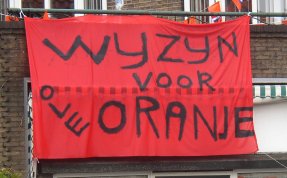
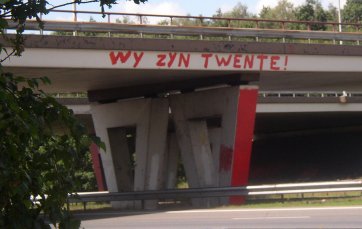
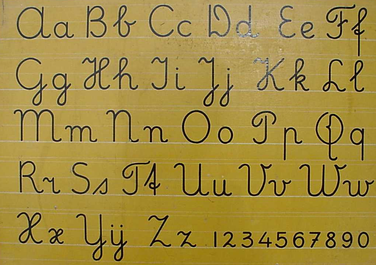 As the rules of usage for the ''IJ'' differ from those that apply to the many other digraphs in the Dutch language—in some situations behaving more as a single ligature or letter than a digraph—the ''IJ'' is not only confusing to foreigners, but also a source of discussion among native speakers of Dutch. Its actual usage in the
As the rules of usage for the ''IJ'' differ from those that apply to the many other digraphs in the Dutch language—in some situations behaving more as a single ligature or letter than a digraph—the ''IJ'' is not only confusing to foreigners, but also a source of discussion among native speakers of Dutch. Its actual usage in the
 When a Dutch word starting with ''IJ'' is capitalised, the entire digraph is capitalised, as in ''IJsselmeer'' or ''IJmuiden''.
Support for this property in software is limited. Poorly localised text editors with
When a Dutch word starting with ''IJ'' is capitalised, the entire digraph is capitalised, as in ''IJsselmeer'' or ''IJmuiden''.
Support for this property in software is limited. Poorly localised text editors with
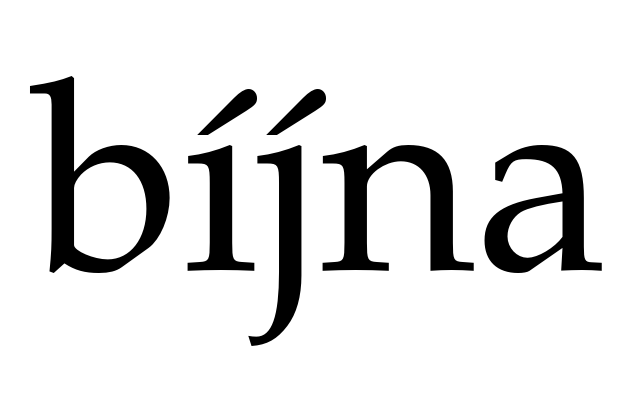 In Dutch orthography, ''ad hoc'' indication of stress can be marked by placing an
In Dutch orthography, ''ad hoc'' indication of stress can be marked by placing an
 When words are written with large inter-letter spacing, ''IJ'' is often, but not always, kept together. ''F r a n k r ij k'' or ''F r a n k r i j k''.
When words are written from top to bottom, with non-rotated letters, ''IJ'' is usually, but not always, kept together. Keeping it together is the preferred way.
When words are written with large inter-letter spacing, ''IJ'' is often, but not always, kept together. ''F r a n k r ij k'' or ''F r a n k r i j k''.
When words are written from top to bottom, with non-rotated letters, ''IJ'' is usually, but not always, kept together. Keeping it together is the preferred way.
 In print, the letter ''ÿ'' (lowercase y with diaeresis) and ''ij'' look very different, but handwriting usually makes ''ÿ'', ''ij'' and ''Y'', ''IJ'' look identical. However, since ''y'' occurs only in loanwords, the letter ''ÿ'' is extremely rare (if not altogether nonexistent) in Dutch.
The ''long ij'' extends below the baseline and so is written with a long stroke. It is often written as a single sign, even in handwriting that does not join letters.
On some road signs in the Netherlands, ''IJ'' appears as a single glyph formed like a ''U'' with a break in the left-hand stroke.
In print, the letter ''ÿ'' (lowercase y with diaeresis) and ''ij'' look very different, but handwriting usually makes ''ÿ'', ''ij'' and ''Y'', ''IJ'' look identical. However, since ''y'' occurs only in loanwords, the letter ''ÿ'' is extremely rare (if not altogether nonexistent) in Dutch.
The ''long ij'' extends below the baseline and so is written with a long stroke. It is often written as a single sign, even in handwriting that does not join letters.
On some road signs in the Netherlands, ''IJ'' appears as a single glyph formed like a ''U'' with a break in the left-hand stroke.
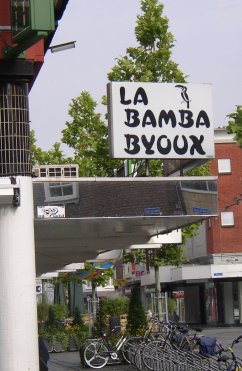 If the ''i'' and the ''j'' belong to different syllables, such as in the mathematical term (syllablised "bi‧jec‧tie"), words with old spelling (syllablised "mi‧ni‧jurk"), (syllablised "ski‧jas"), foreign placenames like , , or person names like , , , they do not form a ligature or a single letter. Earlier statements about sorting ''ij'' on par with ''y'', keeping ''ij'' together in the
If the ''i'' and the ''j'' belong to different syllables, such as in the mathematical term (syllablised "bi‧jec‧tie"), words with old spelling (syllablised "mi‧ni‧jurk"), (syllablised "ski‧jas"), foreign placenames like , , or person names like , , , they do not form a ligature or a single letter. Earlier statements about sorting ''ij'' on par with ''y'', keeping ''ij'' together in the
Dutch language
Dutch ( ) is a West Germanic languages, West Germanic language of the Indo-European language family, spoken by about 25 million people as a first language and 5 million as a second language and is the List of languages by total number of speak ...
, it is sometimes considered a ligature, or a letter in itself. In most fonts that have a separate character for ''ij'', the two composing parts are not connected but are separate glyph
A glyph ( ) is any kind of purposeful mark. In typography, a glyph is "the specific shape, design, or representation of a character". It is a particular graphical representation, in a particular typeface, of an element of written language. A ...
s, which are sometimes slightly kerned.
An ''ij'' in written Dutch usually represents the diphthong
A diphthong ( ), also known as a gliding vowel or a vowel glide, is a combination of two adjacent vowel sounds within the same syllable. Technically, a diphthong is a vowel with two different targets: that is, the tongue (and/or other parts of ...
, similar to the pronunciation of in "pay", and is preserved in such Dutch spellings as the place-name IJsselmeer. In standard Dutch and most Dutch dialect
A dialect is a Variety (linguistics), variety of language spoken by a particular group of people. This may include dominant and standard language, standardized varieties as well as Vernacular language, vernacular, unwritten, or non-standardize ...
s, there are two possible spellings for the diphthong : ''ij'' and ''ei'', with no clear usage rules. To distinguish between the two, the ''ij'' is referred to as the ("long ''ij''"), the ''ei'' as ("short ''ei''") or simply ''E – I''. In certain Dutch dialects (notably West Flemish and Zeelandic) and the Dutch Low Saxon dialects of Low German
Low German is a West Germanic languages, West Germanic language variety, language spoken mainly in Northern Germany and the northeastern Netherlands. The dialect of Plautdietsch is also spoken in the Russian Mennonite diaspora worldwide. "Low" ...
, a difference in the pronunciation of ''ei'' and ''ij'' is maintained. Whether it is pronounced identically to ''ei'' or not, the pronunciation of ''ij'' is often perceived as difficult by people who do not have either sound in their native language.
The ''ij'' originally represented a 'long i'. It used to be written as ''ii'', as in Finnish and Estonian, but for orthographic purposes, the second ''i'' was eventually elongated, which is a reason why it is called . This can still be seen in the pronunciation of some words like (), and the etymology of some words in the Dutch form of several foreign placenames: Berlin
Berlin ( ; ) is the Capital of Germany, capital and largest city of Germany, by both area and List of cities in Germany by population, population. With 3.7 million inhabitants, it has the List of cities in the European Union by population withi ...
and Paris
Paris () is the Capital city, capital and List of communes in France with over 20,000 inhabitants, largest city of France. With an estimated population of 2,048,472 residents in January 2025 in an area of more than , Paris is the List of ci ...
are spelled and . Nowadays, the pronunciation mostly follows the spelling, and they are pronounced with . The ''ij'' is distinct from the letter '' y''. Particularly when writing capitals, Y used to be common instead of IJ in the past. That practice has long been deprecated, since 1804. In scientific disciplines such as mathematics
Mathematics is a field of study that discovers and organizes methods, Mathematical theory, theories and theorems that are developed and Mathematical proof, proved for the needs of empirical sciences and mathematics itself. There are many ar ...
and physics
Physics is the scientific study of matter, its Elementary particle, fundamental constituents, its motion and behavior through space and time, and the related entities of energy and force. "Physical science is that department of knowledge whi ...
, the symbol ''y'' is usually pronounced ''ij'' in Dutch.
To distinguish the ''Y'' from ''IJ'' in common speech, however, ''Y'' is often called (meaning "Greek ''Y''"), a literal translation of ' (from French, with the stress on ''grec'': ) or alternatively called '' Ypsilon''. In modern Dutch, the letter ''Y'' occurs only in loanword
A loanword (also a loan word, loan-word) is a word at least partly assimilated from one language (the donor language) into another language (the recipient or target language), through the process of borrowing. Borrowing is a metaphorical term t ...
s, proper nouns, or when deliberately spelled as Early Modern Dutch. The spelling of Afrikaans
Afrikaans is a West Germanic languages, West Germanic language spoken in South Africa, Namibia and to a lesser extent Botswana, Zambia, Zimbabwe and also Argentina where there is a group in Sarmiento, Chubut, Sarmiento that speaks the Pat ...
(a daughter language of early modern Dutch) has evolved in the exact opposite direction and ''IJ'' has been completely replaced by ''Y''.
However, the ancient use of Y in Dutch has survived in some personal names, particularly those of Dutch immigrants in the United States
The United States of America (USA), also known as the United States (U.S.) or America, is a country primarily located in North America. It is a federal republic of 50 U.S. state, states and a federal capital district, Washington, D.C. The 48 ...
, Canada
Canada is a country in North America. Its Provinces and territories of Canada, ten provinces and three territories extend from the Atlantic Ocean to the Pacific Ocean and northward into the Arctic Ocean, making it the world's List of coun ...
, Australia
Australia, officially the Commonwealth of Australia, is a country comprising mainland Australia, the mainland of the Australia (continent), Australian continent, the island of Tasmania and list of islands of Australia, numerous smaller isl ...
and New Zealand
New Zealand () is an island country in the southwestern Pacific Ocean. It consists of two main landmasses—the North Island () and the South Island ()—and List of islands of New Zealand, over 600 smaller islands. It is the List of isla ...
where as a result of anglicization, the ''IJ'' became a ''Y''. For example, the surname ' was often changed into ''Spyker'' and ''Snijder'' into '' Snyder''.



History
''IJ'' probably developed out of ''ii'', representing a long sound (which it still does in some cases, such as in the word ' and in several Dutch dialects). In theMiddle Ages
In the history of Europe, the Middle Ages or medieval period lasted approximately from the 5th to the late 15th centuries, similarly to the post-classical period of global history. It began with the fall of the Western Roman Empire and ...
, the ''i'' was written without a dot in handwriting, and the combination ''ıı'' was often confused with ''u''. Therefore, the second ''i'' was elongated: ''ıȷ''. Later, the dots were added, albeit not in Afrikaans
Afrikaans is a West Germanic languages, West Germanic language spoken in South Africa, Namibia and to a lesser extent Botswana, Zambia, Zimbabwe and also Argentina where there is a group in Sarmiento, Chubut, Sarmiento that speaks the Pat ...
, a language that has its roots in Dutch. In this language ''y'' is used instead.
Alternatively, the letter J may have developed as a swash form of ''i''. In other European languages it was first used for the final ''i'' in Roman numerals
Roman numerals are a numeral system that originated in ancient Rome and remained the usual way of writing numbers throughout Europe well into the Late Middle Ages. Numbers are written with combinations of letters from the Latin alphabet, eac ...
when there was more than one ''i'' in a row, such as ''iij'' for "three", to prevent the fraudulent addition of an extra ''i'' to change the number. In Dutch, which had a native ''ii'', the "final ''i'' in a row elongated" rule was applied as well, leading to ''ij''.
Another theory is that ''IJ'' might have arisen from the lowercase ''y'' being split into two strokes in handwriting. At some time in the 15th or 16th century, this combination began to be spelled as a ligature ''ij''. An argument against this theory is that even in handwriting which does not join letters, ''ij'' is often written as a single sign.
Some time after the birth of this new letter, the sound which was now represented by ''ij'', in most cases, began to be pronounced much like ''ei'' instead, but words containing it were still spelled the same. Nowadays, ''ij'' in most cases represents the diphthong
A diphthong ( ), also known as a gliding vowel or a vowel glide, is a combination of two adjacent vowel sounds within the same syllable. Technically, a diphthong is a vowel with two different targets: that is, the tongue (and/or other parts of ...
, except in the suffix ''-lijk'', where it is usually pronounced as a schwa. In one special case, the Dutch word ''bijzonder'', the (old) sound is correct standard pronunciation, although is more common and is also allowed.
In proper names
A proper noun is a noun that identifies a single entity and is used to refer to that entity (''Africa''; ''Jupiter''; ''Sarah (given name), Sarah''; ''Walmart'') as distinguished from a common noun, which is a noun that refers to a Class (philoso ...
, ''ij'' often appears instead of ''i'' at the end of other diphthong
A diphthong ( ), also known as a gliding vowel or a vowel glide, is a combination of two adjacent vowel sounds within the same syllable. Technically, a diphthong is a vowel with two different targets: that is, the tongue (and/or other parts of ...
s, where it does not affect the pronunciation: ''aaij'', ''eij'', ''oeij'', ''ooij'' and ''uij'' are pronounced identically to ''aai'' , ''ei'' , ''oei'' , ''ooi'' and ''ui'' . This derives from an old orthographic practice (also seen in older French and German) of writing ''y'' instead of ''i'' after another vowel; later, when ''y'' and ''ij'' came to be seen as interchangeable, the spellings with ''ij'' came to be used. Spelling reforms and standardization have removed the redundant ''j''s in common words, but proper names continue to use these archaic spellings.
Status
 As the rules of usage for the ''IJ'' differ from those that apply to the many other digraphs in the Dutch language—in some situations behaving more as a single ligature or letter than a digraph—the ''IJ'' is not only confusing to foreigners, but also a source of discussion among native speakers of Dutch. Its actual usage in the
As the rules of usage for the ''IJ'' differ from those that apply to the many other digraphs in the Dutch language—in some situations behaving more as a single ligature or letter than a digraph—the ''IJ'' is not only confusing to foreigners, but also a source of discussion among native speakers of Dutch. Its actual usage in the Netherlands
, Terminology of the Low Countries, informally Holland, is a country in Northwestern Europe, with Caribbean Netherlands, overseas territories in the Caribbean. It is the largest of the four constituent countries of the Kingdom of the Nether ...
and in Flanders (Belgium
Belgium, officially the Kingdom of Belgium, is a country in Northwestern Europe. Situated in a coastal lowland region known as the Low Countries, it is bordered by the Netherlands to the north, Germany to the east, Luxembourg to the southeas ...
) sometimes differs from the official recommendations.
Official status
Both theDutch Language Union
The Dutch Language Union ( , NTU) is an international regulatory institution that governs issues regarding the Dutch language. It is best known for its spelling reforms which are promulgated by member states, grammar books, the Word list of th ...
and the consider the ''ij'' to be a digraph of the letters ''i'' and ''j''. The descriptive dictionary '' Van Dale Groot woordenboek van de Nederlandse taal'' states that ''ij'' is a "letter combination consisting of the signs i and j, used, in some words, to represent the diphthong ɛi."''Van Dale Groot woordenboek van de Nederlandse taal'': "lettercombinatie bestaande uit de tekens i en j, gebruikt om, in een aantal woorden, de tweeklank ɛi weer te geven" The '' Winkler Prins'' encyclopedia states that ''ij'' is the 25th letter of the Dutch alphabet, placed between ''X'' and ''Y''.
However, this definition is not generally accepted.
In words where ''i'' and ''j'' are in different syllables, they do not form the digraph ''ij''. In compound words, a hyphen
The hyphen is a punctuation mark used to join words and to separate syllables of a single word. The use of hyphens is called hyphenation.
The hyphen is sometimes confused with dashes (en dash , em dash and others), which are wider, or with t ...
is added, as in ''gummi-jas''.
Netherlands
In the Netherlands, ''IJ'' is often used as a ligature: * In Dutch primary schools, ''ij'' used to be taught as being the 25th letter of the alphabet, and some primary school writing materials still list it as such. However, ''ij'' is according to Onze Taal not part of the Dutch alphabet and is usually sorted under the ''i'' as it is considered to consist of two letters. * When a word starting with ''IJ'' is capitalised, the entire digraph is capitalised: , . * On mechanical Dutch typewriters, there is a key that produces 'ij' (in a single letterspace, located directly to the right of the ''L''). However, this is not the case on modern computer keyboards. * In many word puzzles, such as Lingo, ''ij'' fills one square, but in others, such asScrabble
''Scrabble'' is a word game in which two to four players score points by placing tiles, each bearing a single letter, onto a Board game, game board divided into a 15×15 grid of squares. The tiles must form words that, in crossword fashion, re ...
, ''ij'' fills two squares.
Flanders
In Flanders (Belgium), ''IJ'' is generally described in schools as a combination of two separate characters. * As in the Netherlands, words that begin with ''IJ'' (and that are the first word in a sentence) usually capitalise the entire pair: '' IJzer'', '' IJzertoren''.Usage
Capitalisation
 When a Dutch word starting with ''IJ'' is capitalised, the entire digraph is capitalised, as in ''IJsselmeer'' or ''IJmuiden''.
Support for this property in software is limited. Poorly localised text editors with
When a Dutch word starting with ''IJ'' is capitalised, the entire digraph is capitalised, as in ''IJsselmeer'' or ''IJmuiden''.
Support for this property in software is limited. Poorly localised text editors with autocorrect
Autocorrection, also known as text replacement, replace-as-you-type, text expander or simply autocorrect, is an automatic data validation function commonly found in word processors and text editing interfaces for smartphones and tablet computer ...
functionality may incorrectly convert the second of two initial capital letters in a word to lowercase; such improper spelling can thus be found in informal writing. Support on the internet is similarly inconsistent: Web pages styled with the CSS property text-transform: capitalize are specified to be handled with Unicode
Unicode or ''The Unicode Standard'' or TUS is a character encoding standard maintained by the Unicode Consortium designed to support the use of text in all of the world's writing systems that can be digitized. Version 16.0 defines 154,998 Char ...
language-specific case mapping rules (content language being indicated with HTML language attributes, such as lang="nl" for Dutch), but support for language-specific cases is limited to Mozilla Firefox (version 14 and above) .
Collation
Dutch dictionaries since about 1850 invariably sort ''ij'' as an ''i'' followed by a ''j'', i.e. between ''ih'' and ''ik''. This is the preferred sorting by the Taalunie. On the other hand, some encyclopedias, like the '' Winkler Prins'', 7th edition, sort ''ij'' as a single letter positioned between ''x'' and ''y''. Telephone directories as well as the Yellow Pages in the Netherlands (but not those in Belgium) sort ''ij'' and ''y'' together, as if they were the same, between ''x'' and ''z''. Thanks to this, surnames like ''Bruijn'' and ''Bruyn'' which sound the same (and even look similar), can be found in the same area. However, ''Bruin'', though it sounds the same as well, is placed with "Brui-" and not with "Bruy-".Abbreviations
When words or (first) names are shortened to their initials, in the Netherlands a word or proper name starting with ''IJ'' is abbreviated to ''IJ''. For example, ''IJsbrand Eises Ypma'' is shortened to ''IJ. E. Ypma''. The digraph "ei" in "Eises", like other digraphs in Dutch, is shortened to one letter.Stress
 In Dutch orthography, ''ad hoc'' indication of stress can be marked by placing an
In Dutch orthography, ''ad hoc'' indication of stress can be marked by placing an acute accent
The acute accent (), ,
is a diacritic used in many modern written languages with alphabets based on the Latin alphabet, Latin, Cyrillic script, Cyrillic, and Greek alphabet, Greek scripts. For the most commonly encountered uses of the accen ...
on the vowel of the stressed syllable. In case of a diphthong or double vowel, both vowels should be marked with an acute accent; this also applies to the ''IJ'' (even though ''J'' by itself is not a vowel, the digraph ''IJ'' represents one distinct vowel sound). However, due to technical limitations the accent on the ''j'' is often omitted in electronic documents: "". Nevertheless, in Unicode
Unicode or ''The Unicode Standard'' or TUS is a character encoding standard maintained by the Unicode Consortium designed to support the use of text in all of the world's writing systems that can be digitized. Version 16.0 defines 154,998 Char ...
it is possible to combine characters into a ''j'' with an acute accent — "" — though this might not be supported or rendered correctly by some fonts or systems. This ''j́'' is the combination of the regular (soft-dotted) ''j'' (U+006A) and the combining acute accent ́ (U+0301). In fonts where the j́ combination is not supported, the tittle on the j may be accompanied by the acute, resulting in ȷ̇́ or similar. This may be avoided by using the dotless ȷ (U+0237) with acute ́ (U+0301), resulting in ȷ́.
Spelling
can be spelled out in two ways, depending on whether the speller considers ''ij'' to be one letter or not: * ''V – R – IJ – D – A – G'' * ''V – R – I – J – D – A – G''Wide inter-letter spacing
 When words are written with large inter-letter spacing, ''IJ'' is often, but not always, kept together. ''F r a n k r ij k'' or ''F r a n k r i j k''.
When words are written from top to bottom, with non-rotated letters, ''IJ'' is usually, but not always, kept together. Keeping it together is the preferred way.
When words are written with large inter-letter spacing, ''IJ'' is often, but not always, kept together. ''F r a n k r ij k'' or ''F r a n k r i j k''.
When words are written from top to bottom, with non-rotated letters, ''IJ'' is usually, but not always, kept together. Keeping it together is the preferred way.
Spelling of proper names
In Dutch names, interchangeability of ''i'', ''ij'' and ''y'' is frequent. Some names are changed unofficially for commercial reasons or by indifference: * Johan Cruijff/Cruyff, former football player and manager * Ruud van Nistelrooij/Nistelrooy, football player * Piet Heijn/Heyn/Hein, aDutch West India Company
The Dutch West India Company () was a Dutch chartered company that was founded in 1621 and went defunct in 1792. Among its founders were Reynier Pauw, Willem Usselincx (1567–1647), and Jessé de Forest (1576–1624). On 3 June 1621, it was gra ...
admiral
* Dirk Kuijt/Kuyt, football player
* Arie Luijendijk/Luyendyk, race-driver
* Spijker/Spyker, car manufacturer
* Anner Bijlsma/Bylsma, cellist
The Dutch football team of Feyenoord
Feyenoord Rotterdam () is a Netherlands, Dutch professional association football, football club based in Rotterdam, which plays in the Eredivisie, the top tier in Dutch football league system, Dutch football. Founded as Wilhelmina in 1908, the ...
changed its name from the original "" to "" after achieving international successes. This was done as a reaction to foreign people often mispronouncing the name. The Feijenoord district in Rotterdam
Rotterdam ( , ; ; ) is the second-largest List of cities in the Netherlands by province, city in the Netherlands after the national capital of Amsterdam. It is in the Provinces of the Netherlands, province of South Holland, part of the North S ...
, the namesake of the football club maintains its original spelling.
Phonetic radio alphabet
In the Dutch phonetic radio alphabet, the codeword represents the ''IJ''. This is clearly different from the codeword ''Ypsilon'', which is used to represent the ''Y''. Dutch and Belgian armed forces use the officialNATO phonetic alphabet
The International Radiotelephony Spelling Alphabet or simply the Radiotelephony Spelling Alphabet, commonly known as the NATO phonetic alphabet, is the most widely used set of clear-code words for communicating the letters of the Latin/Roman ...
, where "Y" is "Yankee" and "IJ" is spelled out "India Juliett".
Word games
In crossword puzzles (except forScrabble
''Scrabble'' is a word game in which two to four players score points by placing tiles, each bearing a single letter, onto a Board game, game board divided into a 15×15 grid of squares. The tiles must form words that, in crossword fashion, re ...
– see next paragraph), and in the game Lingo, ''IJ'' is considered one letter, filling one square, but the ''IJ'' and the ''Y'' are considered distinct. In other word games, the rules may vary.
The Dutch version of Scrabble has a ''Y'' with a face value of eight. Some players used it to represent ''IJ'' or ''Y''. The recent Dutch version comes with an example game, which clearly indicates that ''Y'' is only ''Y'', and ''IJ'' should be composed of ''I'' and ''J''. In previous editions of Scrabble there was a single IJ sign.
In word games that make a distinction between vowels and consonants, ''IJ'' is considered to be a vowel, if it is considered one letter. Whether ''Y'' is a vowel or a consonant, is another matter of discussion, since ''Y'' can represent both a vowel or a (half-) consonant.
Technical details
Print and handwriting
 In print, the letter ''ÿ'' (lowercase y with diaeresis) and ''ij'' look very different, but handwriting usually makes ''ÿ'', ''ij'' and ''Y'', ''IJ'' look identical. However, since ''y'' occurs only in loanwords, the letter ''ÿ'' is extremely rare (if not altogether nonexistent) in Dutch.
The ''long ij'' extends below the baseline and so is written with a long stroke. It is often written as a single sign, even in handwriting that does not join letters.
On some road signs in the Netherlands, ''IJ'' appears as a single glyph formed like a ''U'' with a break in the left-hand stroke.
In print, the letter ''ÿ'' (lowercase y with diaeresis) and ''ij'' look very different, but handwriting usually makes ''ÿ'', ''ij'' and ''Y'', ''IJ'' look identical. However, since ''y'' occurs only in loanwords, the letter ''ÿ'' is extremely rare (if not altogether nonexistent) in Dutch.
The ''long ij'' extends below the baseline and so is written with a long stroke. It is often written as a single sign, even in handwriting that does not join letters.
On some road signs in the Netherlands, ''IJ'' appears as a single glyph formed like a ''U'' with a break in the left-hand stroke.
Braille
Dutch Braille, which is used in the Netherlands, has represented by , which represents in other varieties of Braille. is written as . In Belgium,French Braille
French Braille is the original braille alphabet, and the basis of :Innovative braille scripts, almost :French-ordered braille scripts, all others. The collation, alphabetic order of French has become the basis of the international braille conven ...
is used, in which is written simply as + : .
Encoding
The Dutch ''ij'' is not present in theASCII
ASCII ( ), an acronym for American Standard Code for Information Interchange, is a character encoding standard for representing a particular set of 95 (English language focused) printable character, printable and 33 control character, control c ...
code, nor in any of the ISO 8859
ISO/IEC 8859 is a joint International Organization for Standardization, ISO and International Electrotechnical Commission, IEC series of standards for 8-bit character encodings. The series of standards consists of numbered parts, such as ISO/IEC ...
character encoding
Character encoding is the process of assigning numbers to graphical character (computing), characters, especially the written characters of human language, allowing them to be stored, transmitted, and transformed using computers. The numerical v ...
s. Therefore, the digraph is most often encoded as an ''i'' followed by a ''j''. The ligature is present as a national-use character within the Dutch version of ISO 646, one implementation of which is of DEC's National Replacement Character Set (NRCS) aka code page 1102, and it also existed in the Atari ST character set (but not in the GEM character set for PCs) as well as in the Lotus Multi-Byte Character Set (LMBCS). It is also present in Unicode
Unicode or ''The Unicode Standard'' or TUS is a character encoding standard maintained by the Unicode Consortium designed to support the use of text in all of the world's writing systems that can be digitized. Version 16.0 defines 154,998 Char ...
in the Latin Extended-A range as and .. These characters are considered compatibility-decomposable. They are included for compatibility and round-trip convertibility with legacy encodings, but their use is discouraged. Therefore, even with Unicode available, it is recommended to encode ''ij'' as two separate letters. Nonetheless, some fonts use this code point for the ligated form of IJ if it exists.
Keyboards
While Dutch typewriters usually have a separate key for lowercase ''ij'', Belgian typewriters do not.Most Belgian typewriters use the French AZERTY keyboard, though some may use the Belgian one instead; in both cases minus the peripheral keys to the left of the 1 and to the right of the ù, and of course all modifiers (including AltGr) other than Shift and CapsLock. The latter keyboard is used on Belgian computers. Neither of them knows ij or IJ except as i+j or I+J. In the Netherlands, aQWERTY
QWERTY ( ) is a keyboard layout for Latin-script alphabets. The name comes from the order of the first six Computer keyboard keys#Types, keys on the top letter row of the keyboard: . The QWERTY design is based on a layout included in the Sh ...
computer keyboard layout is common. The standard US layout (often in " International Mode") is widely used, although a specific but rarely used Dutch variant (KBD143) does exist. In Belgium, a specific Belgian variant of AZERTY keyboard layout (KBD120) is widely used. None of these keyboards feature a key for ''ij'' or ''IJ''.
Not as a digraph
 If the ''i'' and the ''j'' belong to different syllables, such as in the mathematical term (syllablised "bi‧jec‧tie"), words with old spelling (syllablised "mi‧ni‧jurk"), (syllablised "ski‧jas"), foreign placenames like , , or person names like , , , they do not form a ligature or a single letter. Earlier statements about sorting ''ij'' on par with ''y'', keeping ''ij'' together in the
If the ''i'' and the ''j'' belong to different syllables, such as in the mathematical term (syllablised "bi‧jec‧tie"), words with old spelling (syllablised "mi‧ni‧jurk"), (syllablised "ski‧jas"), foreign placenames like , , or person names like , , , they do not form a ligature or a single letter. Earlier statements about sorting ''ij'' on par with ''y'', keeping ''ij'' together in the kerning
In typography, kerning is the process of adjusting the spacing between Character (symbol), characters in a Typeface#Proportion, proportional font, usually to achieve a visually pleasing result. Kerning adjusts the space between individual le ...
of printed texts, the single square in crossword puzzles, etc., do not apply.
References
Further reading
* . * . * . * . * . * . * . * . * . * . * . * .External links
* . * . * . * z.j. {{Latin script Latin-script digraphs Dutch language Vowel letters Latin-script ligatures